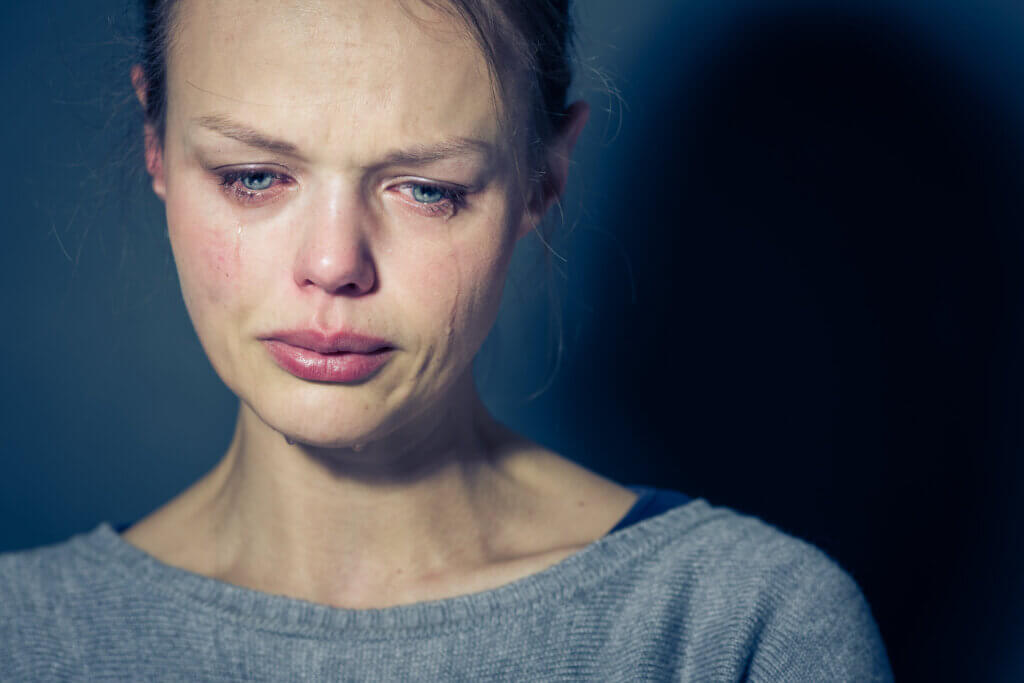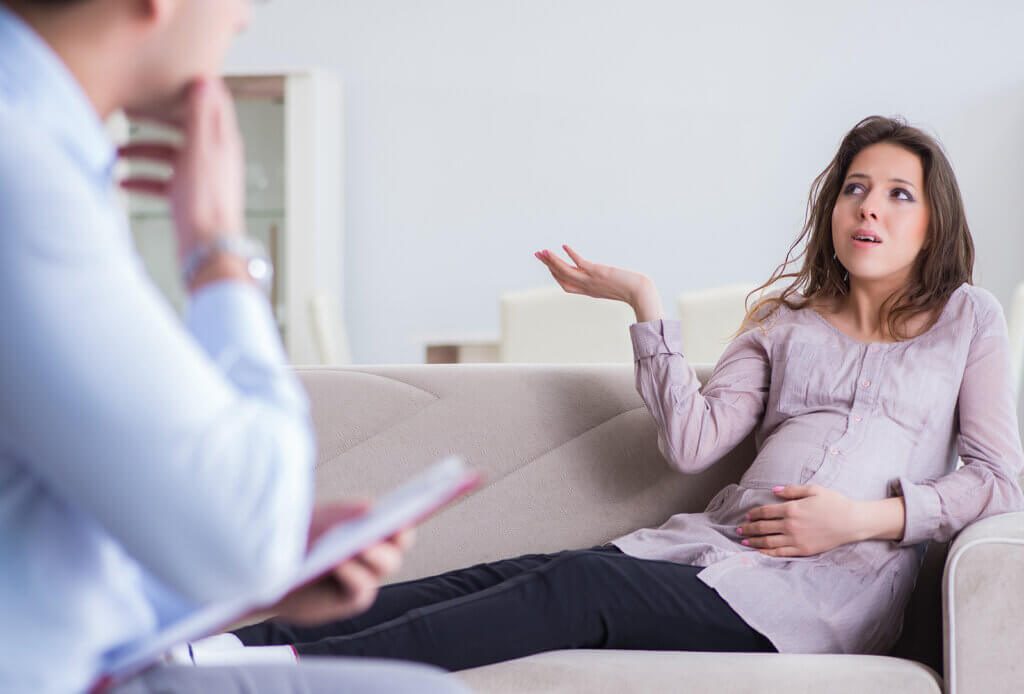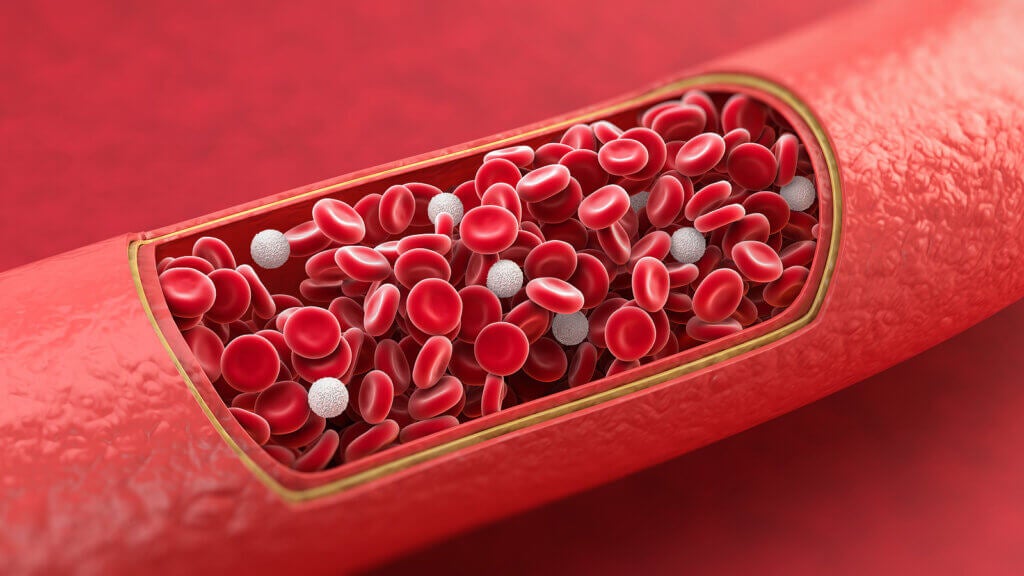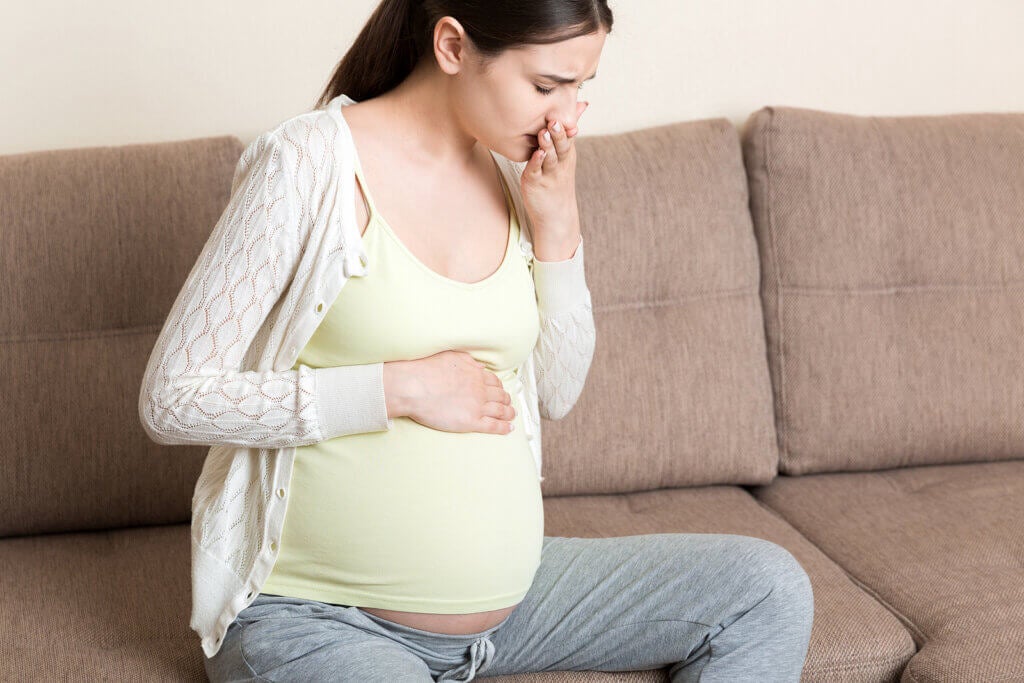Chronic Pelvic Pain in Women: What You Should Know

Researchers classify chronic pelvic pain in women as episodes of cyclical or noncyclical pain lasting at least 3 to 6 months, respectively. Its manifestation is very broad, although it usually includes dysmenorrhea (severe menstrual cramps), dyspareunia (pain during sexual intercourse), dysuria (painful urination) and dyschezia (constipation associated with pain). We’ll show you what scientists say about it.
Its actual prevalence isn’t known, although some estimates suggest that up to 24% of women worldwide suffer from it. Chronic pelvic pain is, therefore, relatively common, and poses serious problems for well-being. Although many cases have no definite cure, something can almost always be done to treat them. We focus on its causes and treatment options.
Causes of chronic pelvic pain in women
The causes of chronic pelvic pain are still a matter of debate. There’s no single catalyst for these episodes, and the exact reason for the pain can’t always be found.
According to the evidence, many women take up to two years to seek medical attention, so they deal with their symptoms for a while before seeking help. Of all the possible explanations for pain, we’ll leave you with the best known.
1. Endometriosis
According to researchers, between 71% and 87% of women with chronic pelvic pain have endometriosis. Endometriosis is a disorder characterized by the growth of endometrial tissue outside the uterus.
It does so mainly in the ovaries, fallopian tubes, and in the tissue that lines the pelvis. As experts warn, it can take years and even decades for it to be correctly diagnosed.
2. Pelvic inflammatory disease (PID)
Specialists have also linked these episodes to pelvic inflammatory disease. The exact mechanism is not known, but it is believed to arise as a consequence of scarring, tissue damage, and adhesions resulting from inflammation and infection.
PID is an infection of a woman’s reproductive organs, often as a result of STDs (chlamydia, gonorrhea and others) and other types of infections.
3. Adenomyosis
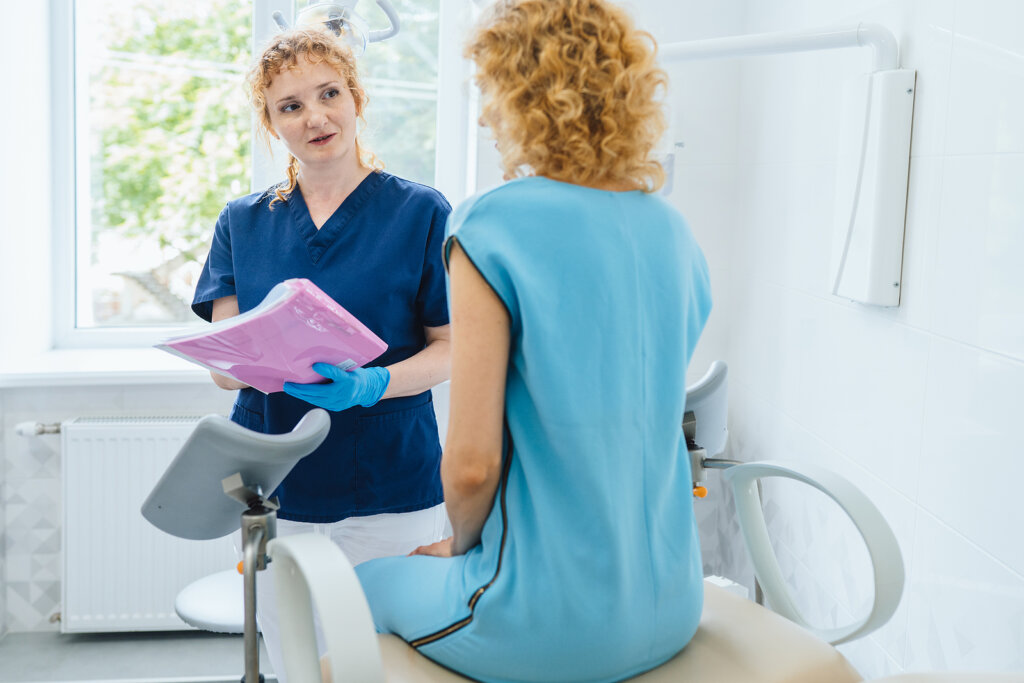
Adenomyosis occurs when the tissue that lines the uterus (endometrium) develops into the muscular wall of the uterus. It is similar to endometriosis, so much so that it shares many of its symptoms.
There is evidence that adenomyosis may be to blame for chronic pelvic pain in women. This cause is more common in the later years of childbearing, and usually disappears after menopause.
4. Uterine fibroids
Finally, experts have found that many patients with uterine fibroids also develop noncyclic pelvic pain. Fibroids are noncancerous growths that develop in or around the uterus.
They are also known as uterine fibroids, and don’t always cause symptoms. When fibroids reach a certain size, complications arise, including pain.
Other possible causes of chronic pelvic pain in women are interstitial cystitis, urinary tract infections, pelvic congestion syndrome, irritable bowel syndrome, levator syndrome, pelvic support problems, vulvodynia, as a consequence of surgery, among others.
Apart from physiological catalysts, psychological ones must also be considered. Indeed, there is evidence that trauma and post-traumatic stress disorder can lead to chronic pelvic pain. In addition, cases have been found whose catalysts are depression and anxiety.
These are just two examples of how these episodes can be psychological in nature. It’s important to note that many cases remain idiopathic (no direct cause of them is found).
Treatment for chronic pelvic pain

There are many conditions that explain chronic pelvic pain in women. Given the variety of catalysts, there’s no single treatment.
The first step is to launch a diagnostic process so that the exact trigger can be found. When you know what is causing the pain, you can choose a specific therapy to control it.
As the specialists warn, the objective of the treatment is to maximize the quality of life and well-being of the patient, with emphasis on involving him in self-control. It’s for this reason that many therapies focus on symptom management, which is done before a specific diagnosis is made. In this way, it’s possible to control pain and improve the patient’s general well-being.
This is done considering that it can take months and even years before finding the exact catalyst. In the process, psychological and physiological factors are ruled out, and even then it isn’t always possible to find its trigger.
Based on the specialist’s criteria, the use of antibiotics, analgesics, hormonal treatments, and antidepressants can be considered.
You can also opt for complementary therapies, such as physical therapy, psychotherapy, trigger point injections, acupuncture, meditation, yoga, and pain rehabilitation programs. Interest in neurostimulation has grown in recent years, so it’s a strategy to consider. The most serious cases can be addressed through surgery.
There are many options for treating these episodes, and those affected should be aware of them. The alternative is not to learn to live with the pain, but to find its cause and in the process try different methods that provide relief. If you think you have chronic pelvic pain, be sure to consult a specialist, or in any case consult a second opinion.
Researchers classify chronic pelvic pain in women as episodes of cyclical or noncyclical pain lasting at least 3 to 6 months, respectively. Its manifestation is very broad, although it usually includes dysmenorrhea (severe menstrual cramps), dyspareunia (pain during sexual intercourse), dysuria (painful urination) and dyschezia (constipation associated with pain). We’ll show you what scientists say about it.
Its actual prevalence isn’t known, although some estimates suggest that up to 24% of women worldwide suffer from it. Chronic pelvic pain is, therefore, relatively common, and poses serious problems for well-being. Although many cases have no definite cure, something can almost always be done to treat them. We focus on its causes and treatment options.
Causes of chronic pelvic pain in women
The causes of chronic pelvic pain are still a matter of debate. There’s no single catalyst for these episodes, and the exact reason for the pain can’t always be found.
According to the evidence, many women take up to two years to seek medical attention, so they deal with their symptoms for a while before seeking help. Of all the possible explanations for pain, we’ll leave you with the best known.
1. Endometriosis
According to researchers, between 71% and 87% of women with chronic pelvic pain have endometriosis. Endometriosis is a disorder characterized by the growth of endometrial tissue outside the uterus.
It does so mainly in the ovaries, fallopian tubes, and in the tissue that lines the pelvis. As experts warn, it can take years and even decades for it to be correctly diagnosed.
2. Pelvic inflammatory disease (PID)
Specialists have also linked these episodes to pelvic inflammatory disease. The exact mechanism is not known, but it is believed to arise as a consequence of scarring, tissue damage, and adhesions resulting from inflammation and infection.
PID is an infection of a woman’s reproductive organs, often as a result of STDs (chlamydia, gonorrhea and others) and other types of infections.
3. Adenomyosis

Adenomyosis occurs when the tissue that lines the uterus (endometrium) develops into the muscular wall of the uterus. It is similar to endometriosis, so much so that it shares many of its symptoms.
There is evidence that adenomyosis may be to blame for chronic pelvic pain in women. This cause is more common in the later years of childbearing, and usually disappears after menopause.
4. Uterine fibroids
Finally, experts have found that many patients with uterine fibroids also develop noncyclic pelvic pain. Fibroids are noncancerous growths that develop in or around the uterus.
They are also known as uterine fibroids, and don’t always cause symptoms. When fibroids reach a certain size, complications arise, including pain.
Other possible causes of chronic pelvic pain in women are interstitial cystitis, urinary tract infections, pelvic congestion syndrome, irritable bowel syndrome, levator syndrome, pelvic support problems, vulvodynia, as a consequence of surgery, among others.
Apart from physiological catalysts, psychological ones must also be considered. Indeed, there is evidence that trauma and post-traumatic stress disorder can lead to chronic pelvic pain. In addition, cases have been found whose catalysts are depression and anxiety.
These are just two examples of how these episodes can be psychological in nature. It’s important to note that many cases remain idiopathic (no direct cause of them is found).
Treatment for chronic pelvic pain

There are many conditions that explain chronic pelvic pain in women. Given the variety of catalysts, there’s no single treatment.
The first step is to launch a diagnostic process so that the exact trigger can be found. When you know what is causing the pain, you can choose a specific therapy to control it.
As the specialists warn, the objective of the treatment is to maximize the quality of life and well-being of the patient, with emphasis on involving him in self-control. It’s for this reason that many therapies focus on symptom management, which is done before a specific diagnosis is made. In this way, it’s possible to control pain and improve the patient’s general well-being.
This is done considering that it can take months and even years before finding the exact catalyst. In the process, psychological and physiological factors are ruled out, and even then it isn’t always possible to find its trigger.
Based on the specialist’s criteria, the use of antibiotics, analgesics, hormonal treatments, and antidepressants can be considered.
You can also opt for complementary therapies, such as physical therapy, psychotherapy, trigger point injections, acupuncture, meditation, yoga, and pain rehabilitation programs. Interest in neurostimulation has grown in recent years, so it’s a strategy to consider. The most serious cases can be addressed through surgery.
There are many options for treating these episodes, and those affected should be aware of them. The alternative is not to learn to live with the pain, but to find its cause and in the process try different methods that provide relief. If you think you have chronic pelvic pain, be sure to consult a specialist, or in any case consult a second opinion.
- Ball E, Khan KS. Recent advances in understanding and managing chronic pelvic pain in women with special consideration to endometriosis. 2020;9:F1000 Faculty Rev-83. Published 2020 Feb 4.
- Bloski T, Pierson R. Endometriosis and Chronic Pelvic Pain: Unraveling the Mystery Behind this Complex Condition. Nurs Womens Health. 2008;12(5):382-395.
- Chen Q, Li YW, Wang S, et al. Clinical Manifestations Of Adenomyosis Patients With Or Without Pain Symptoms. J Pain Res. 2019;12:3127-3133. Published 2019 Nov 14.
- Ghaly, A. F., & Chien, P. F. Chronic pelvic pain: clinical dilemma or clinician’s nightmare. Sexually transmitted infections. 2000; 76(6): 419-425.
- Latthe P, Latthe M, Say L, Gülmezoglu M, Khan KS. WHO systematic review of prevalence of chronic pelvic pain: a neglected reproductive health morbidity. BMC Public Health. 2006 Jul 6;6:177.
- Meltzer-Brody S, Leserman J, Zolnoun D, Steege J, Green E, Teich A. Trauma and posttraumatic stress disorder in women with chronic pelvic pain. Obstet Gynecol. 2007 Apr;109(4):902-8.
- Ozawa Y, Murakami T, Terada Y, Yaegashi N, Okamura K, Kuriyama S, Tsuji I. Management of the pain associated with endometriosis: an update of the painful problems. Tohoku J Exp Med. 2006 Nov;210(3):175-88.
- Siqueira-Campos VME, Da Luz RA, de Deus JM, Martinez EZ, Conde DM. Anxiety and depression in women with and without chronic pelvic pain: prevalence and associated factors. J Pain Res. 2019;12:1223-1233. Published 2019 Apr 16.
- Tirlapur SA, Vlismas A, Ball E, Khan KS. Nerve stimulation for chronic pelvic pain and bladder pain syndrome: a systematic review. Acta Obstet Gynecol Scand. 2013 Aug;92(8):881-7.
- Zimmermann A, Bernuit D, Gerlinger C, Schaefers M, Geppert K. Prevalence, symptoms and management of uterine fibroids: an international internet-based survey of 21,746 women. BMC Womens Health. 2012;12:6. Published 2012 Mar 26.
- Zondervan KT, Yudkin PL, Vessey MP, Dawes MG, Barlow DH, Kennedy SH. Patterns of diagnosis and referral in women consulting for chronic pelvic pain in UK primary care. Br J Obstet Gynaecol. 1999 Nov;106(11):1156-61.
Este texto se ofrece únicamente con propósitos informativos y no reemplaza la consulta con un profesional. Ante dudas, consulta a tu especialista.

